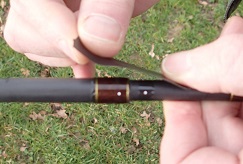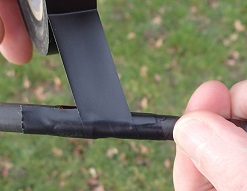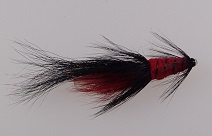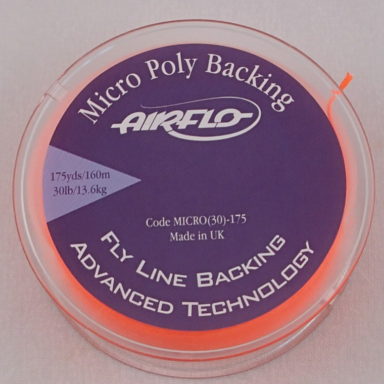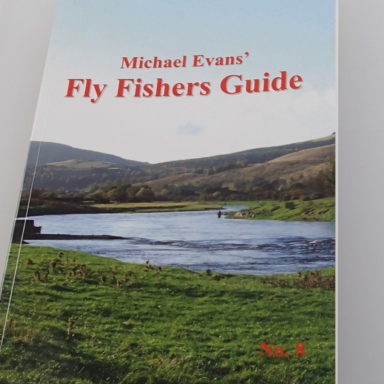Setting Up
I am often asked: “When setting up my salmon gear, should I tape my rod joints or not?”
The answer to this is yes. Let me explain: Modern carbon joints should be put together with a twist, which creates a friction lock. Twisting to lock also means you wear the joint evenly. Another twist will unlock the joint which is why after watching a fairly common tug-of-war contest in the car park at the end of a week, I can then separate the joints with little effort – usually!
When you trout cast on still water the rod is moved in a straight line back and forth (again usually) and this does not open the joints or shouldn’t. But when Spey Casting on a river you are constantly twisting the rod and this will tend to un-lock the joint. Hence it is preferable to tape when Spey Casting with single or double handed rods but not when still water trout fishing.
I am indebted to a Doctor who came on one of my first courses back in the 90s for a very good tip for then ensuring that the joint remains straight under the tape tape. Lay a straight piece along the joint first and then wind more tape over it, always starting from the butt end so that the tape acts like roof tiles water from the top running over the tape joints as in the pictures below.
Which Line?
Best answer to this is ask the ghillie.
In the absence of a good ghillie, a good general rule is always to use the fastest sinking line set up you have as long as it keeps the fly high enough in the water to always swing round onto the dangle where the fish are.
Adding to that this might mean that if you are on the shallow water side fishing into deep water use a sink tip such as my Dredger or a full floating line plus a polyleader.
If you are on the deep water side fishing across to shallower water or in high water generally use a full sinker.
In the spring when we are looking for fresh running fish sink tips and intermediates will catch fish running up river through the top 3ft or so of water. In the back end when we are looking for resting fish well down on the bottom in cold water we use Hi Density lines. In fact in the back end on Tweed if you are not bumping the bottom at least one cast in 10 you are not fishing effectively.
Oh and by the way, a sink tip is not a substitute for a full sinking line (or at least a line where the main belly of the line sinks to keep the fly down) when a full sinker is needed and no they are not easier to cast – unless they are merely skating on the surface because the current is so strong. If you think they are you might need some instruction on casting sunk lines. A sinking line is easier to cast than a full floater because it is thinner for the same weight and cuts through the air much faster. All you need to do is learn the simple technique for rolling it to the surface.
For your leader set up go to the advice section on leaders
What Fly?
Short of writing a book here, let me offer some basic advice. “Let the dog at least see the rabbit!”
The lower and clearer the water the smaller and more sparsely tied you want the fly to be. In low summer water small flies from 10 down to as small as 16. Here are the well known Ally’s Shrimp designed by Alistair Gowans and my own Tail Fire.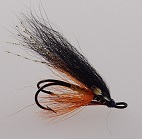

In higher and colder water, flies from size 10 up to size 6 and then on to tubes 1″ to 3+” Bear in mind that where allowed, salmon will happily seize a 4inch Kynoch or Spinner. This is an Orange & Black tube a good fly in the Autumn on Tweed.
In slow water your fly will not necessarily swim level so avoid using fish imitating patterns and concentrate on shrimp, prawn or nymph patterns. Here is my own Mike’s Prawn
In fast flow use fish imitating tubes such as my yellow Evans Special or eel patterns such as a collie dog or sunray shadow..
But always remember, the fresher the salmon you expect, the bigger the fly, the more potted the fish, the smaller the fly – usually.
TACTICS
Study the river and consider the places where salmon can run and rest. They like a steady flow of water, but not too strong or they waste energy trying to maintain position. When running, salmon tend to take the line of least resistance and will often rest before and after tackling a serious obstacle.
Concentrate your efforts immediately above and below rapids or falls, or where salmon might have to pass close to your bank. Look for the stopping places.
- In high water, fish the slack water; in low water, fish the main current.
- Cast at approx. 45 degrees downstream, or wider in slower current.
- Always let the fly swing right round and pull in 2 to 3 yards when the line is ‘on the dangle’ before re-casting.
- Keep the rod tip upstream of the line so that the fly always hangs under tension.
- As soon as you feel the weight of a fish on the end, lift the rod deliberately and bend in to it.


